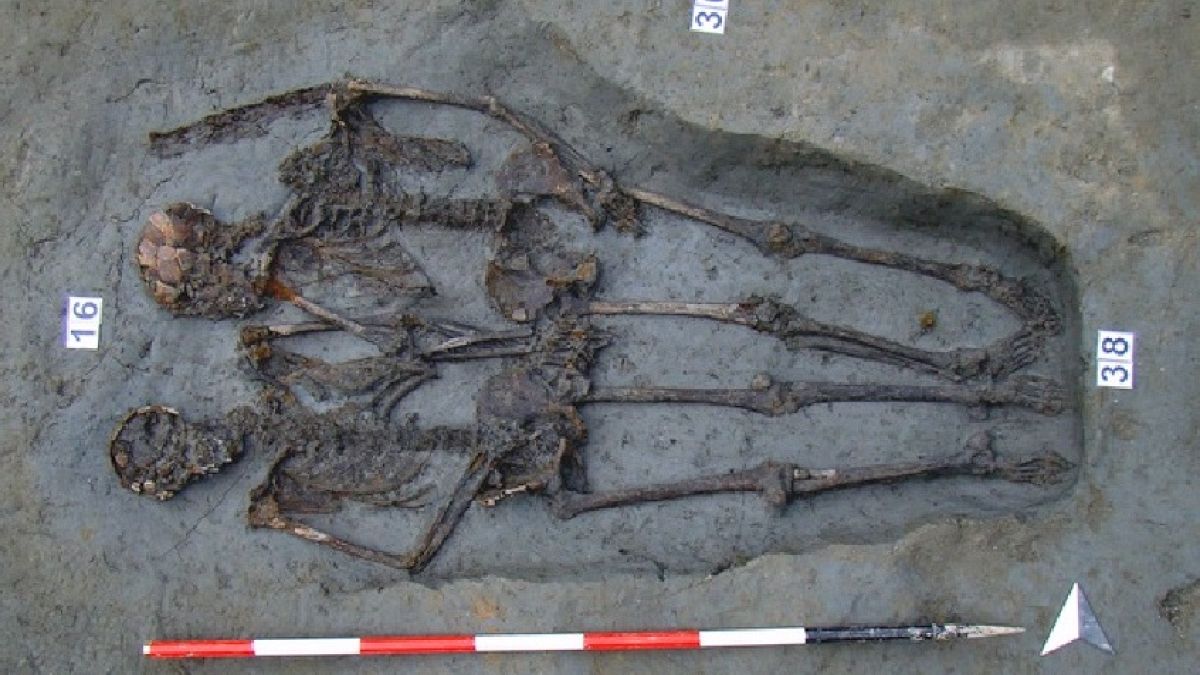Researchers from the University of Bologna used a new technique which found a male-only protein present in their teeth enamel
A pair of skeletons dubbed the “Lovers of Modena” because they were discovered holding hands are both male, say scientists.
Researchers from the University of Bologna tested the bones of the two skeletons which were discovered in Modena in northern Italy in 2009.
The two skeletons were deliberately buried hand-in-hand in the grave which is dated from between the 4th and 6th centuries.
When the lovers were found it was initially impossible to tell whether they were male or female because they were badly preserved. They were dubbed the “Lovers of Modena” by the international media.
Read more: 'A very rare find': Archaeologists uncover remains of saddled horse near Pompeii
Using a new technique, researchers discovered a protein called AMELY (amelogenin isoform Y) in the teeth of both skeletons, which is only present in males. Women have two X chromosomes.
The report, published in the journal Scientific Reports, said: “Although we currently have no information on the actual relationship between the ‘Lovers of Modena’, the discovery of two adult males intentionally buried hand-in-hand may have profound implications for our understanding of funerary practices in Late Antique Italy.”
There is no evidence the pair were in a relationship and it is unlikely a homosexual relationship would be publicly marked during a burial in Late Antiquity.
The researchers suggest the pair could have been members of the same family such as brothers or cousins or they were soldiers buried together in a war grave.
